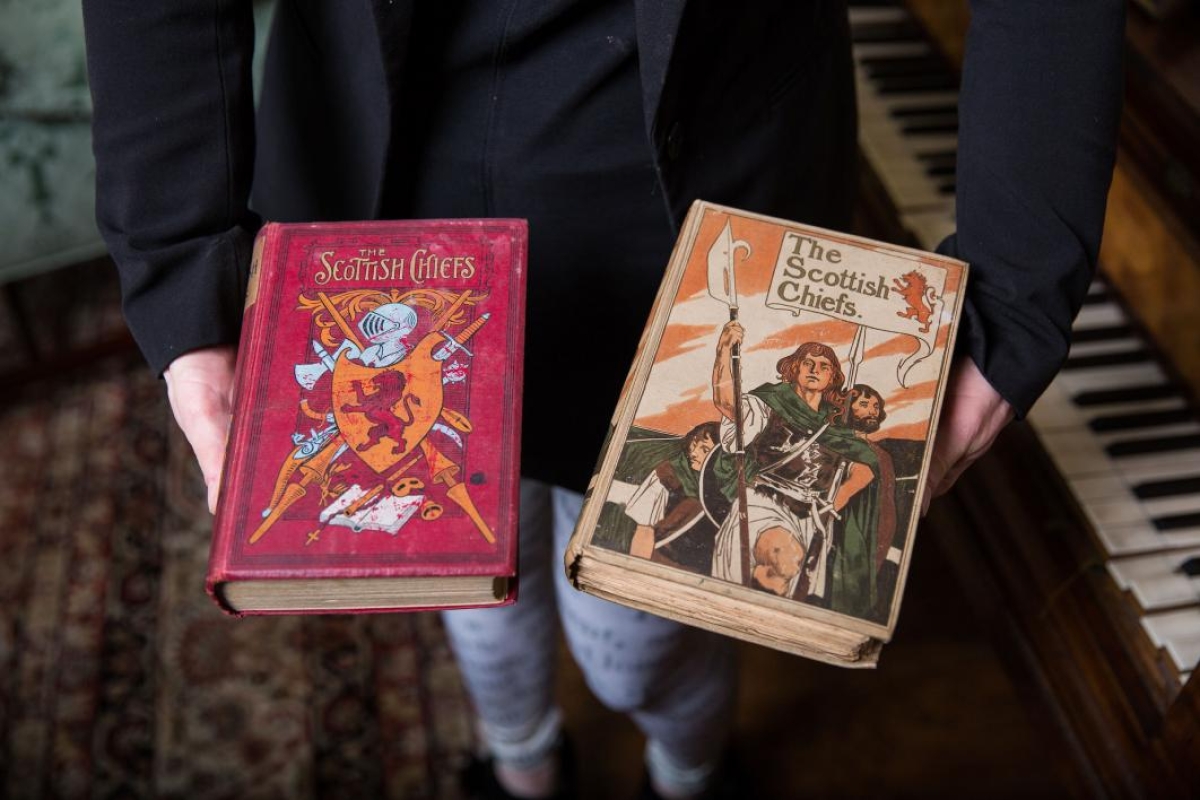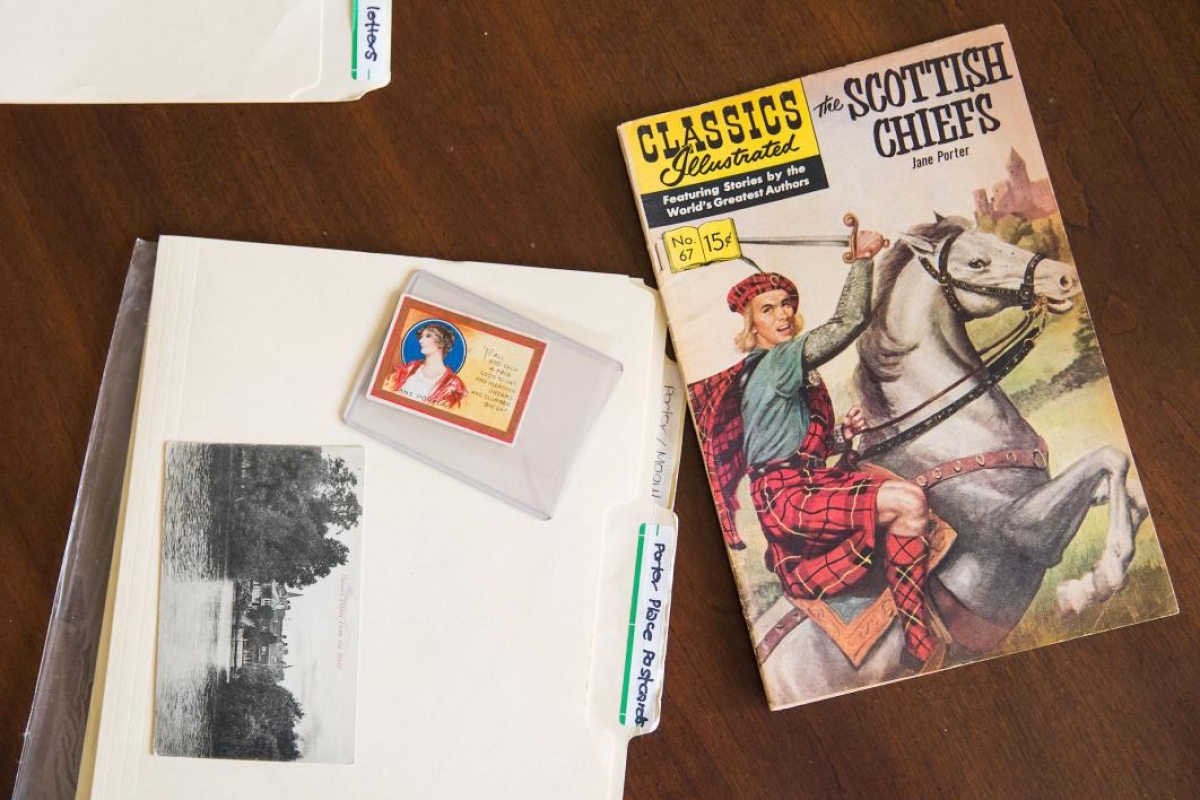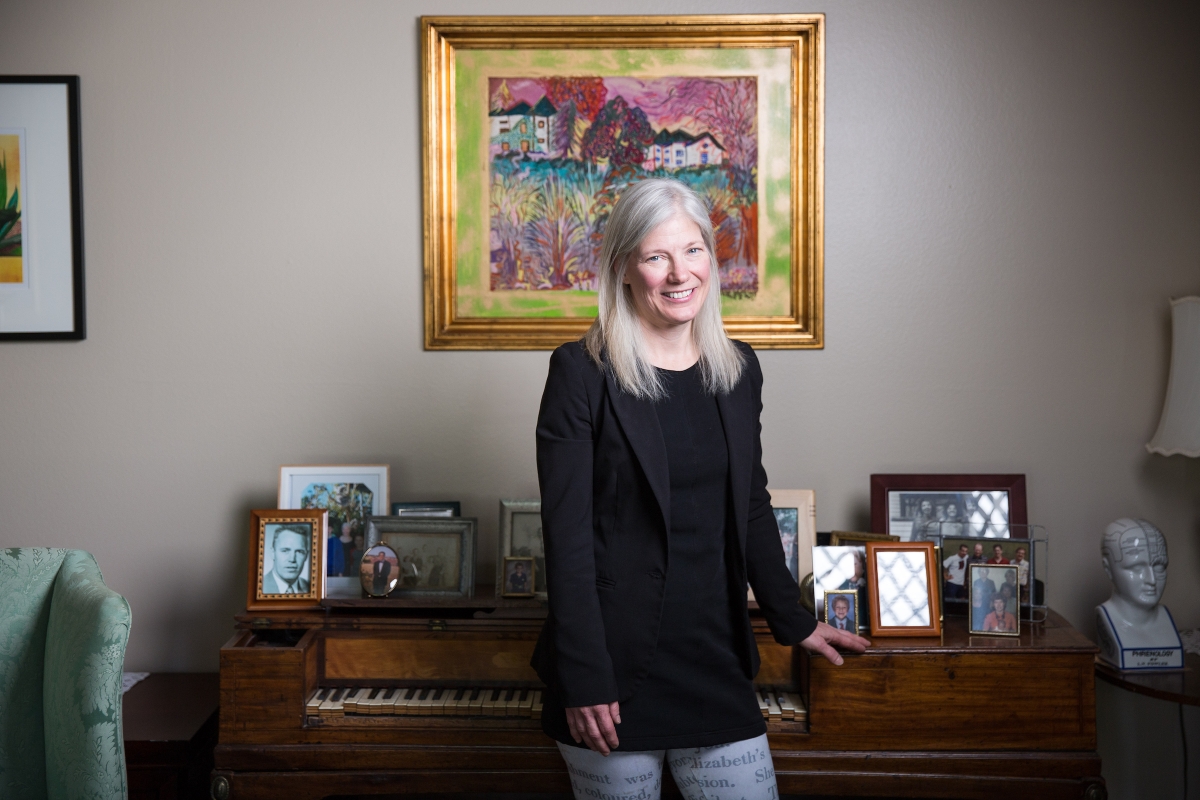ASU English prof to plumb lives of literary sisters with Guggenheim Fellowship

Update: The National Endowment for the Humanities named ASU English Professor Devoney Looser a Public Scholar on Aug. 8, an honor that will provide $60,000 in funding to support her writing of the book detailed in this story.
In March the New York Times introduced a project called “Overlooked,” in which influential women whose lives and achievements had been neglected in the past were given recognition with a long-overdue obituary. Some of the names that had fallen by the wayside were shocking: Sylvia Plath, Diane Arbus, Ida B. Wells.
In an endeavor of a similar spirit, ASU English Professor Devoney Looser has been studying the early 19th-century literary sisters Jane and Anna MariaThere has been some debate as to the pronunciation of Anna Maria’s name. Looser believes it was pronounced /məˈraɪə/ (as in Mariah Carey) because of a poem she came across at the University of Kansas Spencer Library that rhymed “Anna Maria” with “fire.” Porter for more than a decade. Now that Looser has been named a 2018 Guggenheim Fellow, she’ll be funneling those years of research into a book on the sisters, which will explore their contributions to literature as well as their remarkable personal lives.
Like many of the women featured in “Overlooked,” the Porter sisters were well-known during their lifetimes, and their work received both critical and popular acclaim. But in the years that passed since their deaths in the mid-1800s, they were largely disregarded.
“I’m not bringing back two writers who were obscure,” Looser said, “but two writers who were accomplished, famous and were recognized. And we’ve just forgotten them.”
The Porter sisters began their writing careers in the early 1800s, around the same time as Jane Austen (another subject of preoccupation for Looser). Unlike Austen, whose stories were set in then-modern times, the Porters were charting new territory in what would become known as the historical novel.
One critic referred to Jane Porter’s bestselling novel “Thaddeus of Warsaw” as “the ‘Gone with the Wind’ of 1803.”
“Jane Porter brought together romance with real history and shaped it into a new kind of story,” Looser said. “She called it a new species of writing, and I don’t think that she’s entirely self-aggrandizing in saying so. She was doing something that was new, and it really struck a chord with the reading public.”
Combined, the sisters published about 26 books — most of them were Anna Maria’s, but Jane’s sold better. Interestingly, Jane was also the more serious of the two sisters, and her novels reflected that in their morally didactic nature and perfect, Christian heroes.
“She could be a battle axe,” Looser said. “But I feel sympathy toward it even when I don’t have the same point of view that she was expressing because I see that she was really backed into a corner in her life circumstances, being the one who had to be responsible.”
Looser first became interested in the Porter sisters because of the sheer volume of personal, unpublished letters that have survived — thousands, whereas we know of only 161 of Jane Austen’s — detailing both the joys and struggles of their daily lives. Often those struggles were financial, thanks in large part to the misadventures of their roguish brothers.
While the Porter sisters made a respectable income from their writing, constantly bailing their brothers out of debt left them rather destitute. In one letter to her sister Anna Maria, Jane said, “The world believes us wealthy but we don’t know where our next two pounds are coming from.”
That was a fact they worked hard to keep from those in their social circle, even moving from London to the less cosmopolitan Surrey to avoid the embarrassment of not having food or drink to offer guests.
And though Jane’s novels sold well in the U.S., copyright laws were such that American publishers weren’t required to pay her any of the proceeds. Perhaps out of guilt, they banded together and bought her a large, ornate chair as a gift, shipping it across the Atlantic, where, by that time, she had no home of her own to put it in.
The letters also reveal how the sisters negotiated the marriage marketplace. While Looser applauds them as “pioneering career women,” the risks they took in their professional lives didn’t always benefit their personal lives.
“They were trying to figure out how to make a living as single women in public life when being a woman in public life was really risqué and not necessarily seen as polite for women of their class,” she said. “So they were doing things to put their words out there and their identities out there that weren’t appreciated, particularly by men.”
Neither sister married, though they both had their fair share of romantic intrigues. Jane fell in love with a military hero, Sir Sidney Smith, who ended up marrying a widow, much to her devastation. Anna Maria made it as far as a secret engagement but that, too, fell through.
Video by Deanna Dent/ASU Now
Looser has spent countless hours poring over their letters to each other, deciphering their flowing cursive and becoming lost in “the very colorful and sometimes painful” details. Though she doesn’t have a sister herself, she found reading how they supported each other and helped one another navigate family conflict while balancing personal and professional life was “moving and illuminating.”
After their deaths — Anna Maria in 1832 and Jane in 1850 — the Porter sisters’ work maintained popularity for some time, before tapering off in the early to mid-20th century. Looser described a comic book adaptation of Jane’s most well-known novel “The Scottish Chiefs” in the 1950s as her “last gasp of fame.”
“They had popular interest, and then their literature increasingly became associated with children’s literature. Once that happens, that’s like the kiss of death,” Looser said.
There are different theories as to why the sisters faded into obscurity while contemporaries like Jane Austen still boast a robust fan base. One involves Sir Walter Scott, a fellow historical novelist whose rise to literary fame eclipsed many of the women who came before him. Another has to do with literary tastes.
“The Porters' works spoke to the fashions and tastes of their own time in a way that really hasn’t survived,” Looser explained. But that doesn’t mean they don’t deserve a closer look.
“I think history has a lot to explain to us about who we’ve become. The history of literature, of women’s rights, all of these things. If we don’t know why we’ve ended up where we’ve ended up, and the ups and downs in the years in between, we’re not going to make the best informed decisions [in the future].
“You could say we should study them because they were writing beautiful, moving things. And that is true. But I think we should also study them because they tell us who we as a people were as well as who we have become, in ways that are sometimes ugly as well as beautiful.”
Looser’s Guggenheim Fellowship lasts through calendar year 2019, at which time she hopes to publish her book on the Porter sisters, tentatively titled “Sister Novelists Before the Brontës: The Misses Porter, Fame, and Misfortune in Early Nineteenth-Century Britain.”
In the meantime, she’ll be giving a series of Jane Austen lectures over the next month to support her book “The Making of Jane Austen,” which Publisher’s Weekly named a top 10 pick in Essays and Literary Criticism for spring 2017. For event updates and info, follow Professor Looser on Twitter.
And she still skates, though nowadays just for fun.
Top photo: ASU Professor Devoney Looser is a recipient of a Guggenheim Fellowship and will work on research and writing about 19th-century female writers Jane and Anna Maria Porter. Photo by Deanna Dent/ASU Now
More Arts, humanities and education

ASU professor's project helps students learn complex topics
One of Arizona State University’s top professors is using her signature research project to improve how college students learn science, technology, engineering, math and medicine.Micki Chi, who is a…

Award-winning playwright shares her scriptwriting process with ASU students
Actions speak louder than words. That’s why award-winning playwright Y York is workshopping her latest play, "Becoming Awesome," with actors at Arizona State University this week. “I want…

Exceeding great expectations in downtown Mesa
Anyone visiting downtown Mesa over the past couple of years has a lot to rave about: The bevy of restaurants, unique local shops, entertainment venues and inviting spaces that beg for attention from…





